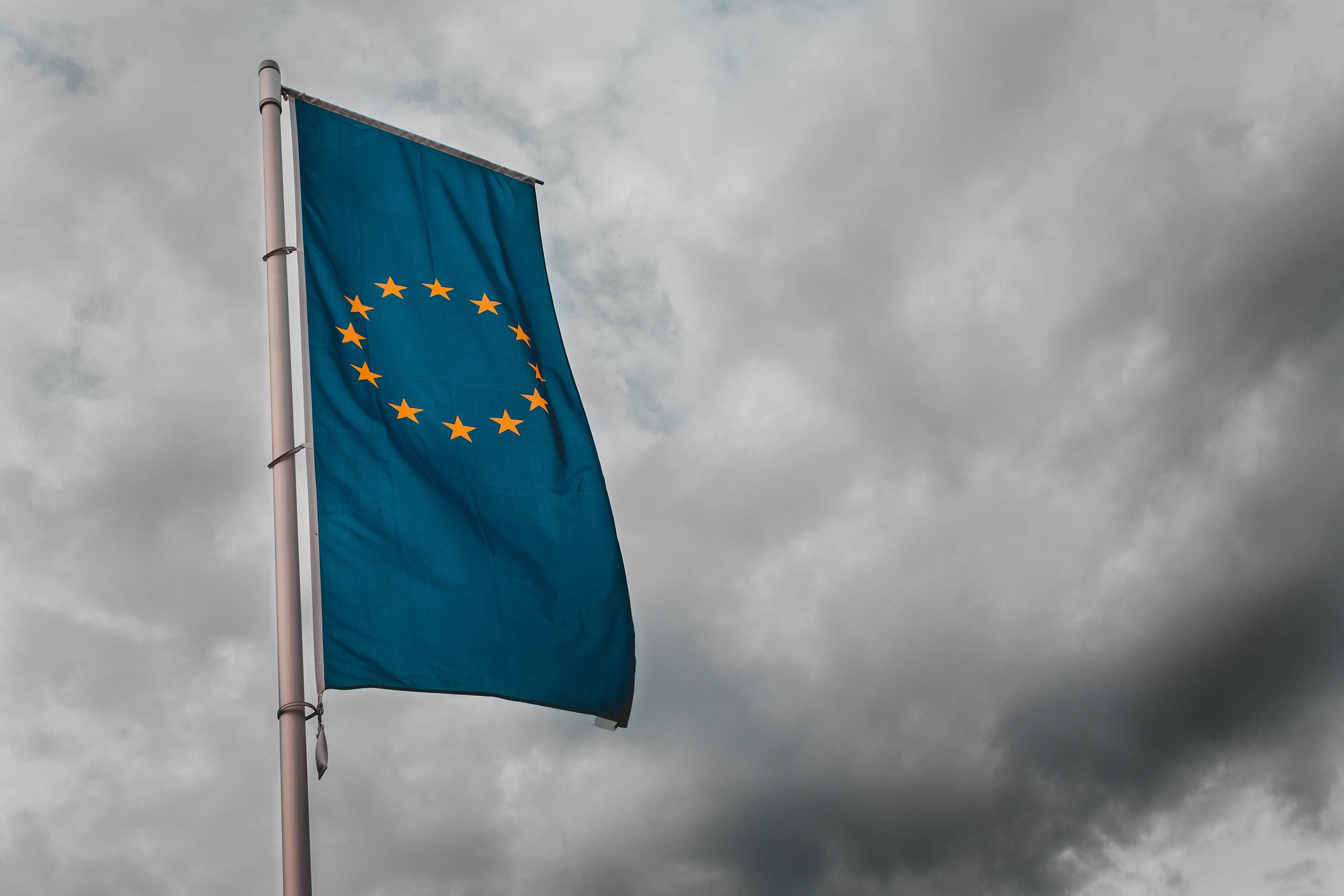Introduction
The first ever clickable banner ad was of AT&T that appeared on Hotwired.com in October 1994. Over the years, online advertising tools and technologies, collectively referred to as “ad tech”, have evolved that have exploited multiple categories of user data to target audiences that are interested in specific products or services. Broadly, there are two types of advertising, namely, search advertising and display advertising. Search advertising refers to text advertisements that are displayed above or below the search results of a search engine every time a user enters a search query that matches with a keyword, on which advertisers bid. On the other hand, display advertising are visual based advertisements that are displayed on the website of a publisher. In comparison to display advertisements, search advertisements are more successful in terms of users performing the desired action after expressing their interest in a given product or service. Display advertising is an important source of revenue for large tech companies, publishers and advertisers. Advertisers use display advertising to raise “brand awareness” amongst consumers. The “programmatic” era is characterized as selling of ad inventory through computerized decision-making processes, which are managed by “ad tech” intermediaries. The publishers and advertisers are concerned by “ad tech tax” referring to large and opaque fees that are applied by intermediaries in the online display advertising sector. From a competition lawyer’s perspective, such intermediaries may engage in exploitative and exclusionary strategies.
Display Advertising Ecosystem
Serving of adverts is the predominant source of monetization for platform services such as search engines and social media services. Such search engines and social media services make money by selling inventory to advertisers. In an online setting, inventory is essentially an empty space on a web page or mobile app, that can be filled with text, including links to other websites, images and videos. Earlier, publishers wishing to monetise their available ad space / inventory engaged in direct bilateral negotiations with advertisers for selling ad space at a given price. However, publishers ran “fill” risk, i.e., they might be left with unsold inventory. Technological advancement led to a completely automated ad inventory buying / selling process. This process is known as “programmatic advertising”. It consists of automated decision making, wherein software and complex algorithms fuelled by various categories of user data (behavioural, demographic etc) are used to sell and purchase ad inventory within fragments of a second, avoiding human negotiation between publishers and advertisers. The process of programmatic real time bidding (“RTB”) that usually consists of about 300-400 milliseconds consists of the following steps:
- A user visits the website of publisher.
- Advertisers are invited to bid for the available ad space so that advertisement is displayed to a particular user (“ad impression”) in a real time auction, each time.
- The highest bidder wins the ad impression.
- Such highest bidder gets to serve the ad that the user gets to actually see on the website.
Earlier programmatic advertising was used to facilitate the sale of inventory that publishers had not managed to directly sell to advertisers. It was convenient for the publishers to sell their most expensive and high yield inventory (“premium”) via direct sales. This trend is changing with time. Programmatic advertising has the following features:
- The focus of the advertisement has shifted from the context / content of the website to the user. In simple terms, this means that, advertisers can reach their tailored audience segments that correspond to the campaign goals irrespective of the website that they visit.
- The user data plays a key role for the advertisers in its bidding process. Such data could range from behavioral data extracted from browsing history, sociodemographic data such as age, gender and geographical data. If advertisers have better user data, then they are more willing to bid for a user within their target group, that results in higher revenues for the publisher.
- The entry of intermediaries have enabled the advertisers to pay for access to ad inventory and the publishers to be compensated for granting such access. It is pertinent to note that, within the publisher and the advertiser, that are multiple parties that facilitate exchanges between them by (i) providing intermediation services or (ii) providing necessary technology tools for the delivery of ads. The following table illustrates the different types of intermediaries:
| Intermediary | Function | Example |
| Data Management Platform (DMP) and Data Providers | They are responsible for collecting, storing, organizing and analyzing data collected from sources that in turn create unique user profile across different devices.
DMPs are usually linked to a DSP to help advertisers target their audience.
|
DMPs : BlueKai (Oracle), Weborama and Adobe Audience Manager
Data Providers : comScore and IAS |
| Ad Networks | They pool inventories from a large number of publishers and then sell it to advertisers. They can buy and sell directly, and buy and sell inventory on ad exchanges or combine both. | Google’s Ad Sense : It allows small publishers (“partner sites”) to sell ads to Google demand sources. Ad Sense is accessed through Adwords. Adwords is a programme that enables advertisers to create ads. Such ads will appear on the relevant Google search result pages and its network of partner sites. |
| Ad Exchanges | They are digital marketplaces for ad inventory where supply and demand meet.
Traditionally, SSPs are different from ad exchanges. However, they are providing integrated solutions.
|
Google’s AdX, AppNexus, The Rubicon Project, OpenX and One by AOL
Google’s AdX has been integrated with DFP to form Google Ad Manager. |
| Demand Side Platforms (“DSPs”) | They manage purchasing of ad inventory for advertisers with a single management interface. They are used by advertisers to connect to an ad exchange / SSP and buy ad inventory. They may also include data processing functionalities to help advertisers find the most effective impression for ads. | Google’s DoubleClick Bid Manager (DBM), DataXu, MediaMath and Amazon DSP |
| Supply Side Platforms (“SSP”) | They organize demands for ad inventory and help the publisher choose the most profitable ad to display. Over the years, SSPs have started to function as ad exchanges, thereby allowing publishers to connect directly to DSPs as opposed to connecting through ad exchange. SSPs are interchangeably used as ad exchanges. | Google’s Ad Exchange, App Nexus, Pubmatic and One by AOL |
| Advertiser Ad Servers | These are tools used by advertisers to manage their ad campaigns. It has two primary functions, namely (a) storage and delivery of advertisement (“creative”) and (b) helping advertisers monitor and optimize their ad campaign by tracking where ads are served and providing detailed reporting on its performance by click through rates | Google’s DoubleClick Campaign Manager that got rebranded to “Display and Video 360” |
| Publisher Ad Server | These are the tools that are used by the publishers to manage their ad inventory. It determines & records the ways in which an ad inventory is filled each time a user visits publisher’s website. | Google’s DoubleClick for Publishers (“DFP”) that got rebranded as “Google Ad Manager” after its integration with AdX, Open X Ad Server and AdZerk Ad Server[1] |
Competition law concerns in ad tech industry
Publishers have two ways in which they can sell their inventory to advertisers. One is direct and the other way is indirect. In the later part, publishers use intermediaries such as SSPs, DSPs and ad exchanges. In case of direct sale, publishers and advertisers make use of ad serving technology to manage ad inventory and ad campaign via publisher ad servers and advertiser ad server.
The ambit of “intermediation” in online advertising includes services provided by intermediaries for sale of smaller publisher’s inventory and a combination of direct and indirect sales for selling a part of the remnant inventory of large publishers. Ad exchanges and ad networks constitute of the market for ad intermediation. The market for ad intermediation is distinct from market that operates without the involvement of ad intermediation since publishers are able to charge higher prices for ad inventory that is sold directly as opposed to those that are sold through intermediaries.
An assessment in competition law begins with answering the following questions, namely:
- Whether online advertising is a distinct product market ? Or, can it be substituted by offline advertising, especially TV advertising? Answering this question will determine the relevant market. It is to be noted that, online advertisement promotes advanced targeting possibilities in comparison to offline advertising. The pricing mechanisms are also different in both scenarios.
- Whether online advertising should be differentiated into search and non-search advertising? Can search advertising substitute display advertising?
Attention market is defined as market that involves “competition in which platforms acquire time from consumers with bundles of content and ads, and sell ads to marketers to deliver messages during that time”. This is a multi sided market, constituting of consumers on one side, advertisers on the other side and content on another side.
As per findings of the Australian Competition and Consumer Commission, Google has substantial market power in search advertising and Facebook has substantial market power in display advertising. The potential competition concerns included self – preferencing, consolidation and vertical integration (including through integration). As per Autorité de la concurrence, instances of potentially anti competitive conduct in online advertising sector included bundling & tying practices, exclusivities, leveraging, discriminatory treatment, blocking interoperability and restricting competitor from accessing data. As per Bundeskartellamt, potential competition concerns include lack of transparency and barriers to competitor’s accessing data in online advertising. The Competition and Markets Authority (“CMA”) noted significant competition problems in digital advertising markets, especially regarding Google and Facebook’s significant market power and incumbency advantages from network effects, economies of scale and unmatchable access to user data. The anti competitive conduct can be remedied by ex ante rules governing the conduct of large online platforms that act as gatekeepers. If a company is found to have “paramount cross-market relevance”, then the regulator might prohibit certain conduct including (a) self favoring; (b) impeding competitors by leveraging market power; (c) using third party data to create barriers to entry; (d) hindering interoperability and data portability; and (v) providing insufficient information about performance for customers.
Google Ad Sense case : Regulating the online search advertising intermediation market
If an undertaking makes it impossible for other players to access the market or makes it difficult for players to access the market, then such conduct causes interference with the way in which the overall competition scenario plays out in the specific market. It is sufficient for a regulator to investigate an anti-trust case when it is of the opinion that the competition structure in a market has been weakened as opposed to finding concrete instances of anti-competitive conduct. In such a scenario, the dominant undertaking can justify by arguing that the following four cumulative conditions are met, namely (i) there is likely to be efficiency gains as a result of dominant undertaking’s conduct; (ii) efficiency gains also benefit consumers and counteract any likely negative effects on competition and on consumers; (iii) conduct is necessary for the achievement of those gains in efficiency; and (iv) conduct does not eliminate effective competition.
The websites such as travel sites aggregators often have an embedded search function. When an user uses this function, the website delivers both search results and search adverts, that appear alongside the search result. Google provide search adverts to owners of “publisher” websites via adsense for search. It is like an intermediary / advertising broker between the advertisers and website owners that intend to profit from the space around search results page. In layperson’s terms, adsense for search works like an online search advertising intermediation platform.
Three conducts were scrutinized under the Google Ad Sense case: (i) exclusivity clause in Google Services Agreement (‘GSAs”) with direct partners; (ii) premium placement and minimum google ads clause and (iii) authorizing equivalent ads clause. The European Commission ruled the aforesaid three conducts to be abuse of dominant position by Google in the market for online search advertising intermediation.
In relation to exclusivity clause in the GSAs with all direct partners sites, all direct partners sites were obliged to source all or most of their search ad requirements from Google, thereby causing an exclusionary effect. Case law suggests that exclusivity obligation is valid in consideration of the grant of rebate. It is important to note that, an exclusive supply obligation deprives a customer of the possibility to switch to a competitor of the dominant undertaking. Further, an exclusivity rebate can also deprive a customer of the rebate associated with the exclusivity condition if it switches part of its requirements to a competitor of the dominant undertaking. In this case, exclusivity clause deterred the direct partners from sourcing competing search ads, prevented access by competing providers of online search advertising intermediation services to a significant part of the EEA wide market for online search advertising intermediation, may have deterred innovation and may have harmed consumers.
In relation to premium placement and minimum google ads clause, direct partners were required to reserve the most prominent space on their search results pages covered by the relevant GSA for google search ads. In addition, direct partners were required to fill the most prominent space on their search results pages covered by the relevant GSA with a minimum number of google search ads. This clause did not allow the direct partners to show any competing search ads either above or immediately next to google search ads. As a result, the direct partners were required to show google ads in the most prominent position, normally at the top left position, above the search results. When a direct partner did not show any search ads at the top left position above the search results, it had to show google search ads in the search advertising space that users viewed first when they scrolled down the page. Google termed this clause as “relaxed exclusivity”.
Last but not least, Google included clauses that required publishers to seek its written approval prior to making any changes to the way in which rival adverts were displayed. The direct implication of inclusion of such a clause was that Google could control how attractive, and therefore clicked on, the competing search adverts could be.
This conduct of brokering of online search adverts made the European Commission fine Google 1.49 billion euros. This was an instance of abuse of dominant position because it enabled Google to cement its dominant position by shielding itself from competitive pressure by imposing anti-competitive contractual restrictions on third party websites. This was an area that was kept away from regulation for around ten years, thereby denying other companies the right to compete on merits and innovate and not giving an opportunity to the consumers to reap the benefits of competition. It is to be noted that, this online search advertising intermediation market is characterized by high barriers to entry, include significant initial and ongoing investments that are required to develop and maintain general search technology, a search advertising platform and a sufficiently large portfolio of both publishers and advertisers. The fine imposed on Google is calculated on the basis of its revenue from online search advertising intermediation in the relevant market, I,e, European Economic Area (“EEA”). This regulatory act has made Google cease illegal activities and has directed it to stop its illegal conduct, to the extent it has not already done so, and refrain from any measure that either has the same or equivalent effect. It is also under scrutiny under the new EU antitrust damages directive, under which the victims of anti-competitive practices can obtain damages. [2] As of date, Google has appealed this decision in the general court of Luxemburg.[3]
What is regulated in ad tech industry?
Structural separation addresses conflict of interest. Conflict of interest arises when platforms not only distribute publisher’s content but also compete with the publishers in the sale of ad space. Facebook utilizes the dominant position as a communication network and Google in the space of search and advertising to extract sensitive business information from publishers, including information on publisher’s audiences. It is argued that structural separation would not only address concern of conflict of interest but would also protect news media and other forms of content creation. Separation could either be in the form of ownership or functional. It is argued that, structural separation holds a higher position over other ad hoc competition remedies that require ongoing monitoring. This is because an entity that operates the exchange is not able to also trade on the exchange. For instance, Google, as a seller of ad space, may be required to divest its exchange, its buying tools and Chrome. Functional separation in addition to conduct and disclosure rules can manage concerns associated with conflict of interest. Implementing “Chinese walls” is one of the ways of functional separation. Digital advertising intermediaries can frame conduct rules that shall manage the incentive and ability of vertically integrated digital advertising intermediaries to not self-preference in respect of access to data, speed and the auction. Such digital advertising intermediaries can be bound by fiduciary duties that prompt them to revert ownership interests in ad server data back to the publishers and advertisers, in which case, they shall share user IDs and other market and consumer data. Disclosure rules would exhibit the ways in which such intermediaries are managing their conflicts of interests. Structural separation runs the risk of negating the efficiencies that would have been achieved by vertical integration. Economies of scale and scope in respect of data would be removed, that might affect the targeted behavioral advertising. The European Commission is of the view that certain structural problems, such as network or scale economies, lack of multi homing or lock in effects, high concentration and high entry barriers, or lack of access to data cannot be remedied under the current competition laws, in the context of remedying such problems in digital advertising markets. The remedies can either be structural or behavioral and can be imposed without finding a case of infringement of competition law or imposing any fines. Such remedies may be applied in cases with existing problems of market power or in markets in structural issues that could lead to dominance. Such remedies can be limited to a finite duration, by including sunset clause. It is a public process wherein the regulator publishes its final report and parties have the right to appeal this decision to the competition law tribunal.
It has been suggested by US Senator Elizabeth Warren, that “platform utilities” such as Google’s Ad Exchange and the businesses on the exchange should be structurally separated in order to avoid conflicts of interest. This shall also promote market entry. She is of the opinion that, Google Search should be separated from the rest of the activities and Google’s acquisition of DoubleClick, Waze and Nest are the mergers that need to be unwound because they lead to anti-competitive conduct.
Conclusion
It is an open point as to how the strategic behavior of the advertisers affects competition within their campaigns along multiple ad paths, across advertisers, across ad networks and ultimately across exchanges.
[1] Damien Geradin & Dimitrios Katsifis (2019) An EU competition law analysis of online display advertising in the programmatic age, European Competition Journal, 15:1, 55-96, DOI: 10.1080/17441056.2019.1574440
[2] Press Release, “Antitrust : Commission fines Google 1.49 billion euros for abusive practices in online advertising “, March 20, 2019, Brussels. Accessible at < https://ec.europa.eu/commission/presscorner/detail/en/IP_19_1770 >
[3] Foo Yun Chee, “Google urges court to scrap $1.6 billion EU antitrust fine”, May 2, 2022. Accessible at < https://www.reuters.com/technology/google-urges-court-scrap-16-bln-eu-antitrust-fine-2022-05-02/ >








